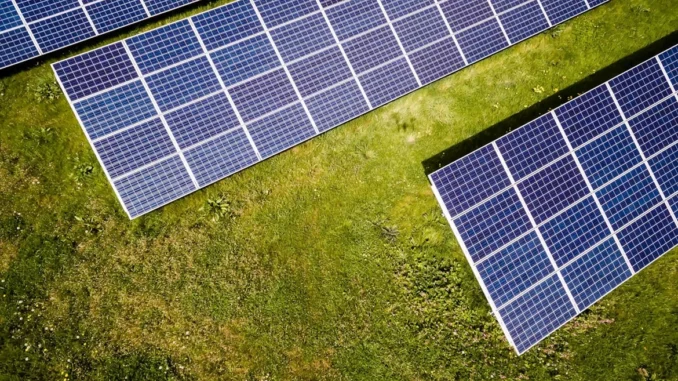
In a quiet corner of Oxford, a team of scientists is revolutionising the way we perceive solar energy. Their pioneering research promises to render traditional solar panels obsolete, replacing them with ultra-thin, flexible solar cells that can be applied to a myriad of everyday objects. I had the opportunity to sit down with Dr Emily Carter, a research fellow at Oxford University’s Department of Physics, to explore this groundbreaking innovation.
Successful low-energy building design hinges on careful planning. Focus360 Energy can help.
Settling into a sunlit café near the university, Dr Carter’s enthusiasm was immediately evident. She began recounting the journey that led to this remarkable breakthrough. “It all started about five years ago,” she recalled, stirring her coffee thoughtfully. “Our team, led by Professors Henry Snaith and Shuaifeng Hu, was focused on overcoming the limitations of traditional silicon solar panels. We aimed to create something not only more efficient but also versatile enough to be seamlessly integrated into daily life.”
Dr Carter explained that the new solar cell technology hinges on an ultra-thin material, just over one micron thick—nearly 150 times thinner than a conventional silicon wafer. “The beauty of this material,” she noted, “lies in its flexibility and efficiency. We can coat it onto virtually any surface—whether it’s your rucksack, mobile phone, or even your car.”
The potential applications of this technology are staggering. Envision a future where your jacket could charge your phone as you walk, or your car could generate its own electricity simply by being parked in the sun. Dr Carter believes this scenario is not as far-fetched as it might seem. “We’ve managed to raise the power conversion efficiency from about 6 per cent to over 27 per cent in just five years. Our goal is to push this even further, potentially reaching up to 45 per cent.”
One of the most exciting aspects of this innovation is its potential to reduce the reliance on traditional solar farms. Dr Junke Wang, another pivotal member of the project, has highlighted how this could alleviate some of the friction between renewable energy projects and agricultural land use. “If more solar energy can be generated in this manner,” Dr Wang has asserted, “we can foresee a diminished need for silicon panels or the construction of more solar farms.”
This sentiment was echoed by Dr Carter, who emphasised the sustainability benefits. “In the past 14 years, the average cost of solar electricity has dropped by 90 per cent. By making solar technology more efficient and versatile, we can continue to drive down costs and reduce our dependence on fossil fuels.”
The commercial potential of this technology is already being realised. Oxford PV, a company spun out of the university to commercialise perovskite photovoltaics, has commenced large-scale manufacturing of these tandem solar cells at its factory near Berlin. Dr Carter mentioned that this facility is the world’s first volume manufacturing line for this type of solar cell. “We originally considered setting up the manufacturing facility in the UK,” she said, with a hint of regret in her voice. “However, the fiscal and commercial incentives available in other parts of Europe and the United States were more attractive. We hope that the newly-created British Energy will focus on supporting such innovations to keep the UK at the forefront of this burgeoning industry.”
As our conversation drew to a close, Dr Carter reflected on the broader implications of their work. “Supplying these materials will be a rapidly growing industry in the global green economy. The UK has demonstrated its ability to lead scientifically, but we need better incentives and pathways to convert this innovation into manufacturing. Otherwise, we risk missing out on a huge opportunity.”
Leaving the café, I couldn’t help but feel a sense of excitement about the future of solar energy. The work being done at Oxford University is not just about improving technology; it’s about reimagining how we interact with energy in our daily lives. With these ultra-thin solar cells, the possibilities are virtually limitless.
As we continue to grapple with the challenges of climate change and energy sustainability, innovations like these offer a glimmer of hope. They remind us that with creativity, collaboration, and a commitment to progress, we can build a brighter, greener future.


Be the first to comment